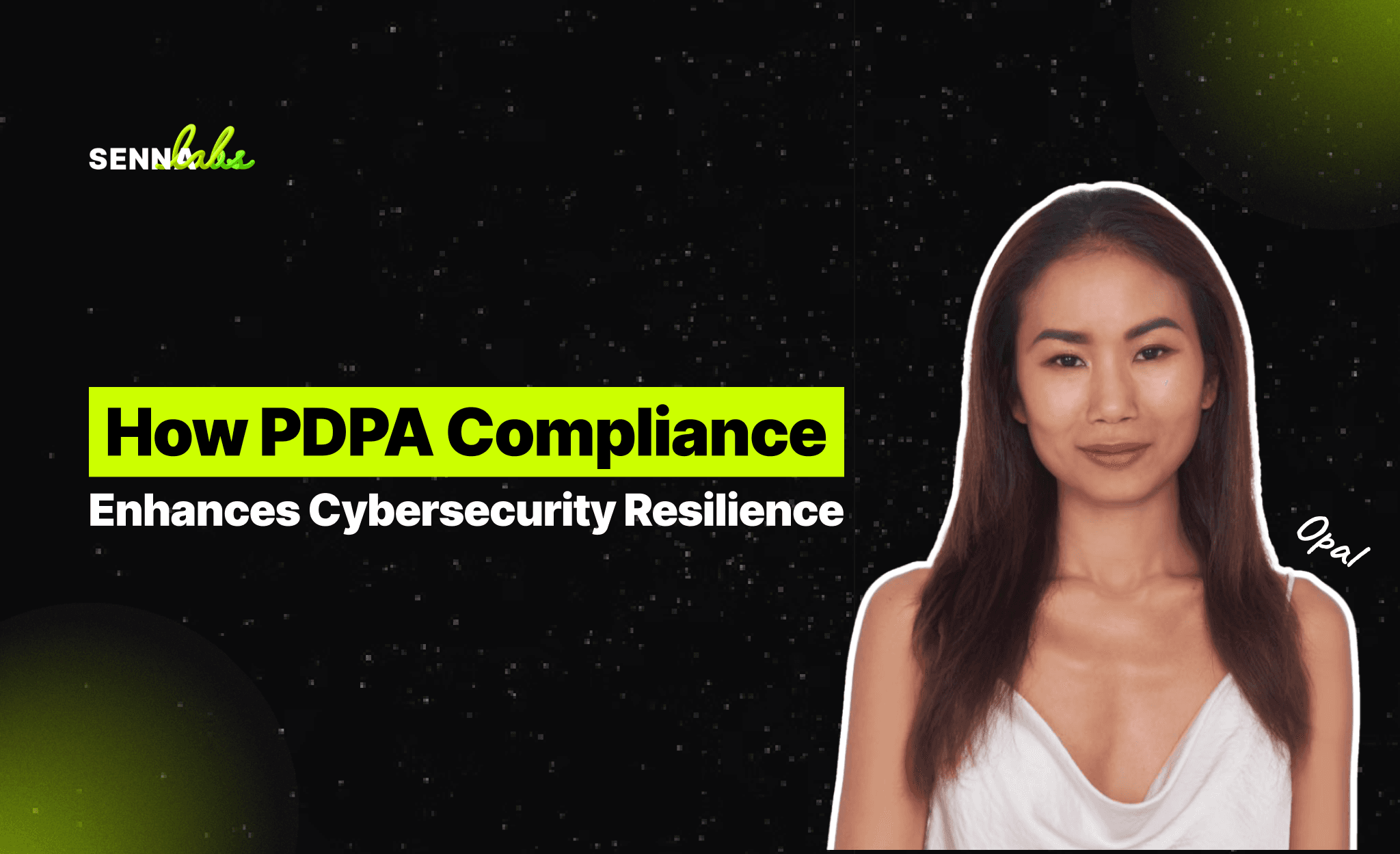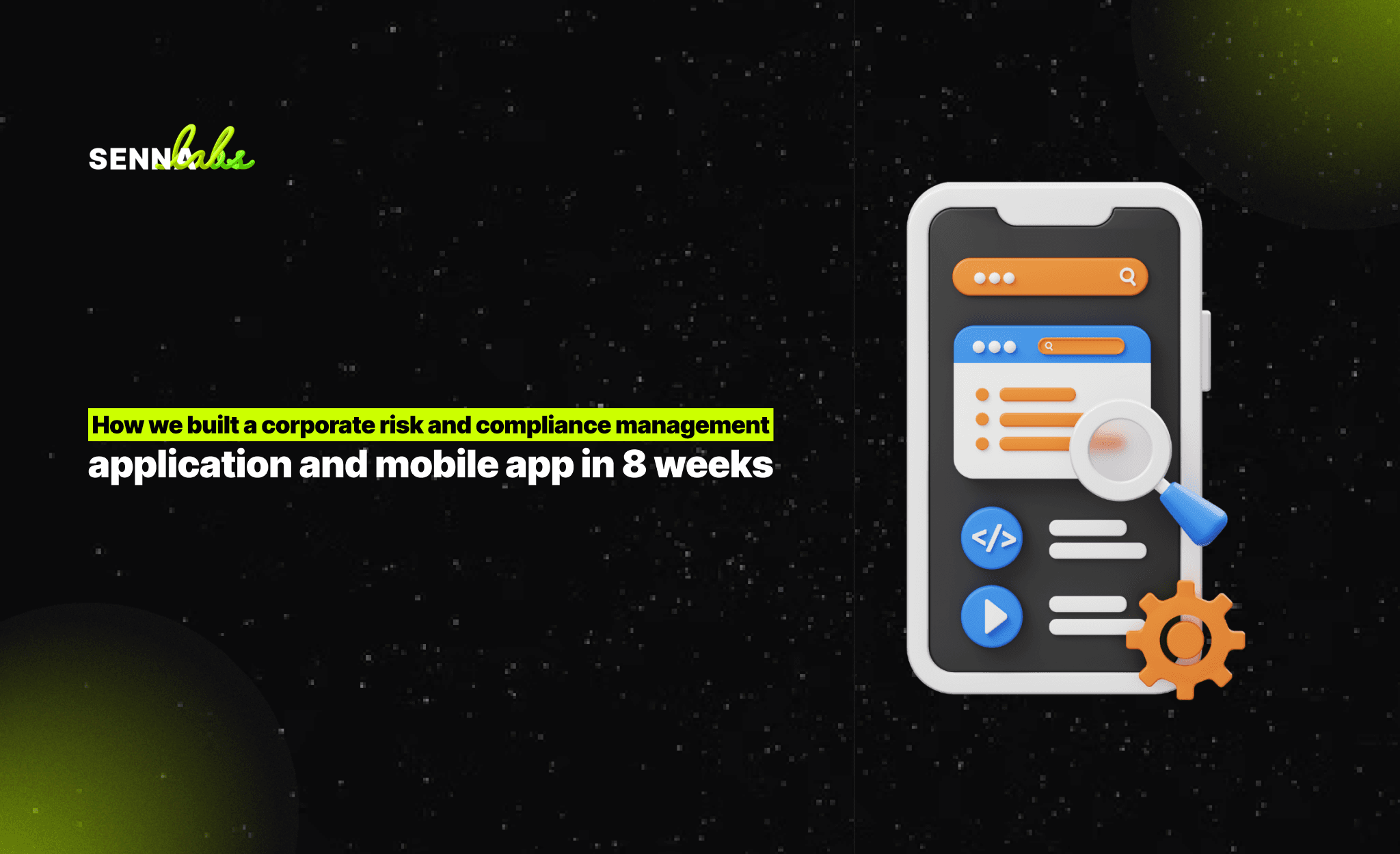How PDPA Compliance Enhances Cybersecurity Resilience
Share

In today's data-driven economy, organizations face growing cybersecurity threats, with data breaches and cyberattacks becoming increasingly frequent and sophisticated. Protecting personal data is not only a regulatory requirement under the Personal Data Protection Act (PDPA) but also a critical aspect of safeguarding an organization’s cybersecurity infrastructure. By aligning with PDPA compliance, businesses can significantly enhance their cybersecurity resilience, ensuring that personal data is protected against unauthorized access, cyberattacks, and data breaches.
This article will explore the relationship between PDPA compliance and cybersecurity, focusing on how businesses can implement PDPA-compliant measures such as encryption, secure access controls, and breach notification processes to reduce cyber threats. Additionally, we’ll examine a real-world use case of a financial services company that enhanced its cybersecurity protocols through PDPA compliance, resulting in a reduction in cyberattacks and unauthorized data access attempts.

The Intersection of PDPA Compliance and Cybersecurity
PDPA compliance is about more than just following legal requirements—it’s about building a strong foundation for data security. Under PDPA, organizations must implement measures to protect personal data, ensure that it is only accessible by authorized individuals, and notify relevant parties in the event of a data breach. These requirements align closely with the goals of cybersecurity, which focus on preventing unauthorized access to sensitive information and mitigating the impact of cyberattacks.
By focusing on PDPA compliance, organizations can strengthen their cybersecurity defenses in the following key areas:
1. Encryption of Personal Data
Encryption is a critical component of both PDPA compliance and cybersecurity. Under PDPA, businesses must take reasonable steps to protect personal data, and encryption is one of the most effective methods for doing so. By encrypting sensitive data, businesses can ensure that even if unauthorized parties gain access to their systems, the data will remain unreadable and unusable.
Encryption serves two primary functions in enhancing cybersecurity:
-
Data at Rest: Personal data stored in databases, servers, or devices should be encrypted to prevent unauthorized access if the storage medium is compromised.
-
Data in Transit: Data transmitted over networks or the internet should also be encrypted to prevent interception by malicious actors during transmission.
By encrypting personal data, businesses can reduce the risk of data breaches and minimize the damage caused by cyberattacks.
2. Secure Access Controls
One of the core requirements of PDPA is ensuring that personal data is only accessible by authorized individuals. In the context of cybersecurity, this means implementing robust access control measures to ensure that only employees, contractors, or third parties with the proper authorization can access sensitive information.
Key access control measures that align with PDPA compliance include:
-
Role-Based Access Control (RBAC): Restricting access to personal data based on an individual’s role within the organization. This ensures that employees only have access to the data necessary for their job functions.
-
Multi-Factor Authentication (MFA): Adding an extra layer of security by requiring users to provide multiple forms of identification (e.g., passwords, biometrics, or one-time verification codes) before accessing personal data.
-
Least Privilege Principle: Granting users the minimum level of access required to perform their duties, reducing the risk of unauthorized access to sensitive information.
By implementing secure access controls, businesses can mitigate the risk of insider threats and unauthorized access, two major causes of data breaches.
3. Data Breach Notification and Response Plans
PDPA requires organizations to notify relevant authorities and affected individuals in the event of a data breach. In addition to being a regulatory requirement, having a robust data breach response plan in place is a critical component of cybersecurity resilience.
A well-designed breach response plan should include:
-
Detection: Mechanisms for detecting potential data breaches, such as monitoring systems for unusual activity or implementing intrusion detection software.
-
Containment: Immediate actions to limit the spread of the breach, such as isolating affected systems or revoking access privileges.
-
Notification: Processes for notifying regulatory authorities, affected individuals, and other stakeholders in accordance with PDPA requirements.
-
Recovery: Steps to recover from the breach, such as restoring lost data, securing affected systems, and implementing additional safeguards to prevent future incidents.
By preparing for data breaches in advance, businesses can respond quickly and effectively, minimizing the damage caused by cyberattacks and ensuring compliance with PDPA regulations.
Benefits of Aligning Cybersecurity with PDPA Compliance
By aligning cybersecurity protocols with PDPA compliance, organizations can achieve several key benefits that strengthen their overall security posture and protect against a wide range of threats.
1. Reduced Risk of Cyberattacks
Implementing PDPA-compliant measures such as encryption, access controls, and breach response plans significantly reduces the risk of cyberattacks. Cybercriminals often target weak security systems, but businesses that prioritize data protection through PDPA compliance create a stronger defense, making it more difficult for attackers to exploit vulnerabilities.
2. Increased Customer Trust
In an era where data breaches and cyberattacks are common headlines, customers are increasingly concerned about how their personal data is being handled. By demonstrating a commitment to both PDPA compliance and cybersecurity, businesses can build trust with their customers, reassuring them that their personal information is safe. This increased trust can lead to stronger customer relationships, higher retention rates, and a competitive advantage in the marketplace.
3. Compliance with Multiple Regulations
Aligning cybersecurity measures with PDPA compliance also helps businesses meet other data protection regulations, such as the General Data Protection Regulation (GDPR) or the California Consumer Privacy Act (CCPA). Many data protection laws share similar principles, such as ensuring data security, obtaining consent, and reporting data breaches. By complying with PDPA, businesses are often better prepared to meet the requirements of other international regulations, reducing the complexity of global compliance.
4. Enhanced Incident Response Capabilities
A proactive approach to cybersecurity and PDPA compliance helps businesses develop stronger incident response capabilities. By establishing a data breach response plan and regularly testing it, organizations can respond more effectively to cyber incidents, reducing the impact of a breach and preventing further damage.
5. Reduced Costs of Data Breaches
Data breaches are costly, not just in terms of regulatory fines but also in terms of business disruption, lost revenue, and reputational damage. Businesses that prioritize PDPA compliance and cybersecurity can reduce the likelihood of a breach, and if a breach does occur, they can mitigate the damage more effectively. This results in lower costs associated with data breaches and faster recovery times.
Use Case: PDPA Compliance Enhances Cybersecurity in a Financial Services Company
To illustrate the benefits of aligning PDPA compliance with cybersecurity, let's examine a real-world example involving a financial services company.
The Challenge:
The financial services company handled sensitive customer information, including personal details and financial records, making them a prime target for cyberattacks. However, the company’s cybersecurity protocols were not fully aligned with PDPA requirements, leaving gaps in data protection and increasing the risk of unauthorized access and data breaches.
The Solution:
To address these challenges, the company implemented a series of PDPA-compliant security measures, including:
-
Encryption: All personal data was encrypted, both at rest and in transit, to protect it from unauthorized access.
-
Access Controls: The company implemented multi-factor authentication (MFA) and role-based access control (RBAC) to ensure that only authorized personnel could access sensitive information.
-
Data Breach Response Plan: A comprehensive breach response plan was developed, including clear protocols for detecting, containing, and reporting data breaches in accordance with PDPA requirements.
The Results
After implementing these measures, the company saw a 15% reduction in cyberattacks and unauthorized data access attempts. The strengthened security protocols not only reduced the risk of breaches but also improved the company’s ability to detect and respond to potential threats. By aligning their cybersecurity efforts with PDPA compliance, the company built a more resilient security infrastructure, protecting both their customers and their business.
Conclusion
PDPA compliance is not just about adhering to legal requirements—it’s an opportunity to enhance an organization’s cybersecurity resilience. By implementing key security measures such as encryption, access controls, and breach response plans, businesses can protect personal data, reduce the risk of cyberattacks, and build customer trust.
Aligning cybersecurity with PDPA compliance creates a strong foundation for protecting sensitive information and ensures that organizations are well-prepared to respond to evolving cyber threats. For businesses that prioritize both compliance and security, the result is a safer, more resilient digital environment.

Share

Keep me postedto follow product news, latest in technology, solutions, and updates
Related articles
Explore all


